Continuing our Flower Power series…..
Orchid
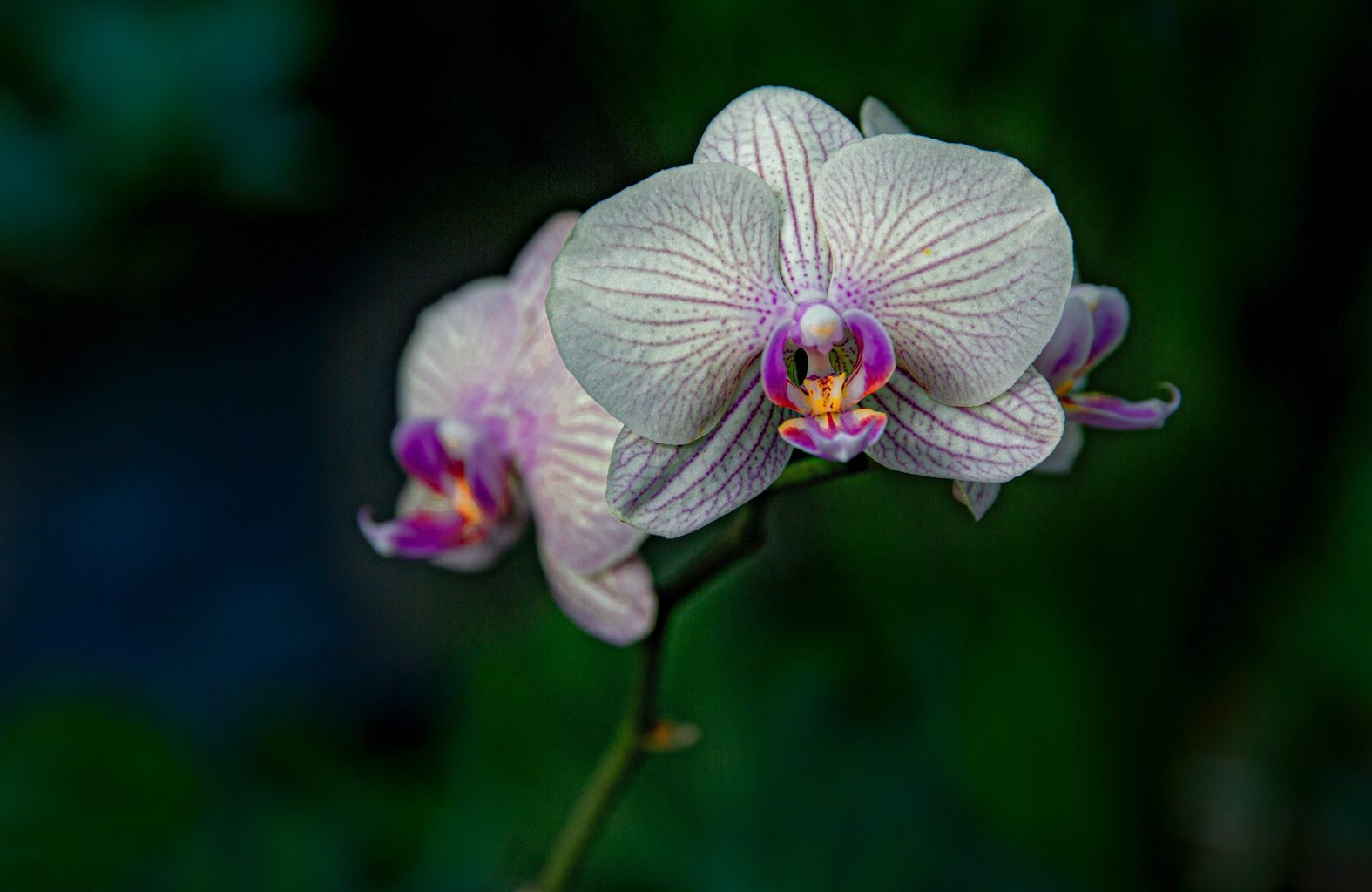
Mysterious and fascinating, orchids have numerous characteristics that set them apart from other flowering plants.
The Orchidaceae family is the second largest family of flowering plants with an estimated 28,000 – 31,000 species. Orchids inhabit every place in the world, with the one exception being Antarctica. While some research teams places the original appearance of orchids at 112 – 120 million years ago (before the continental divide), lack of definitive fossil records continue to obscure this plant’s origins. Very recently an orchid fossil was recovered from within a Miocene amber sample found in the Dominican Republic dating back 15 – 20 million years.
Evolutionary biologists are to this day captivated by many unanswered questions about orchids, not least of which is their extraordinary and unparalleled ability to diversify. In attempting to follow their evolution, scientists have uncovered an almost unbelievable range of stunning colors, shapes, fragrances, size, and habitat.
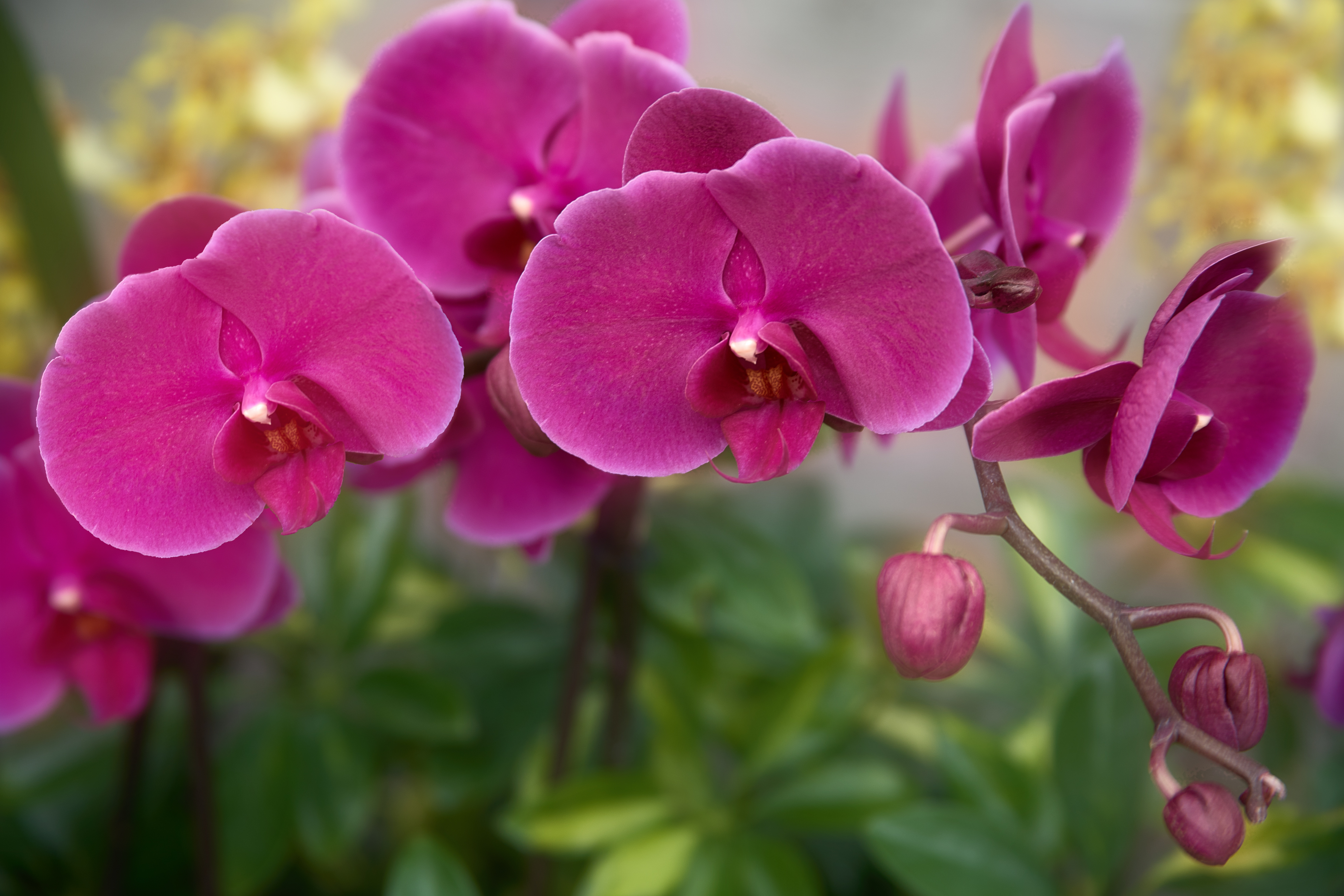
How would you identify an orchid? With a family so vast and diverse there is actually no way, short of becoming a specialist and even then, there are many disagreements. Some orchids are strikingly beautiful with glorious colors while others can seem ugly with scales, warts or hairs.
The one thing which botanists seem to agree on is they are different from all other flowering plants in the fusing of the stamen and pistil (male and female portions) into a central structure called the column.
As a simple general guideline with many of the orchids we may commonly see, the structure of the flower is a key identifier. If you draw a line vertically through the middle of an orchid flower, each side becomes a mirror image of the other, the same as a human face. Look around at other flowers and you will see the majority do not have this characteristic.
Some scholars think the bilateral symmetry of the orchid flower and human face is partially responsible for the widespread popularity of these plants. It is like “gazing into another face to find it gazing back at you.”
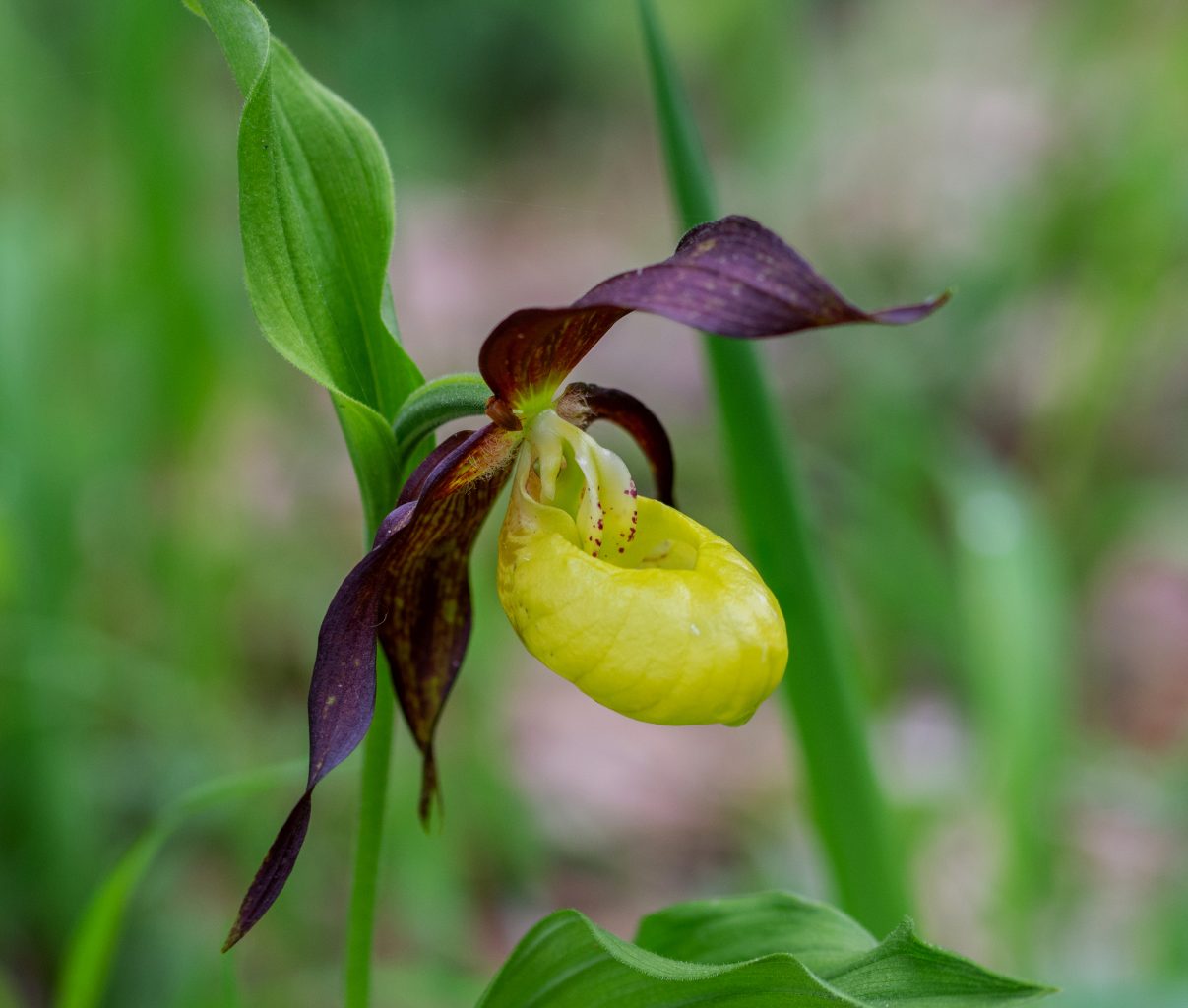
“Orchid mania’s” recorded beginnings stem from the late 18th century when many exotic species became a strange fixation, spurring on countless expeditions and pilgrimages. By the early 20th century there was a name given to it, “orchidelirium”.
Smitten collectors stripped the landscape in England to the point where the lady’s slipper orchid (pictured above) was thought to be extinct. Even though the lady’s slipper orchid was not originally plentiful in England, orchid lovers were still bereft at the loss. A botanist was overjoyed when he happened upon one growing wild in the 1930s in the English countryside. It was kept secret for 40 years and the plant has very gradually started a return. Ironically, the lady’s slipper orchid had to be placed under police protection as recently as 2009 because someone began to steal pieces of them. Today the lady’s slipper orchid remains a legally protected species.
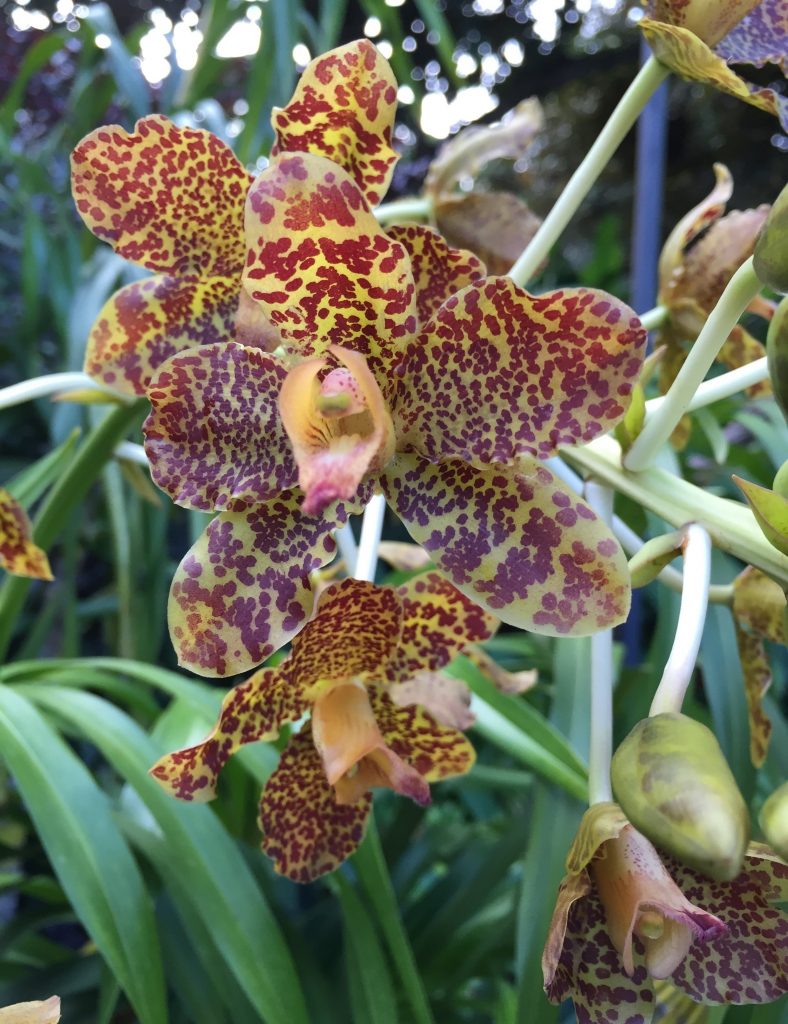
Orchids’ variety shows in their size. According to the Guinness World Records, the smallest orchids can be found in Mexico, Guatemala, Costa Rica and Panama. They grows .25 inch high and .78 inch wide. Blooming in the spring, there are just two or three very tiny flowers which are about .09 inch wide.
On the other end of the spectrum there is the Tiger Orchid (pictured above). One of these beauties, highlighted in an 1851 exhibition in London, weighed in at 2 tons with flower stalks up to 2 meters. These amazing plants are native to Southeast Asia to Papua New Guinea, growing between the groins of large trees in the rainforests. A Tiger Orchid (also called Queen of Orchids) was planted in 1861 in the Singapore Botanic Gardens and turned 162 years old in 2023. At sixteen feet wide, the flowers are yellow with the maroon or dark red spots and bloom every 2-4 on 3-meter stalks, producing about 80 flowers up to 4 inches wide.
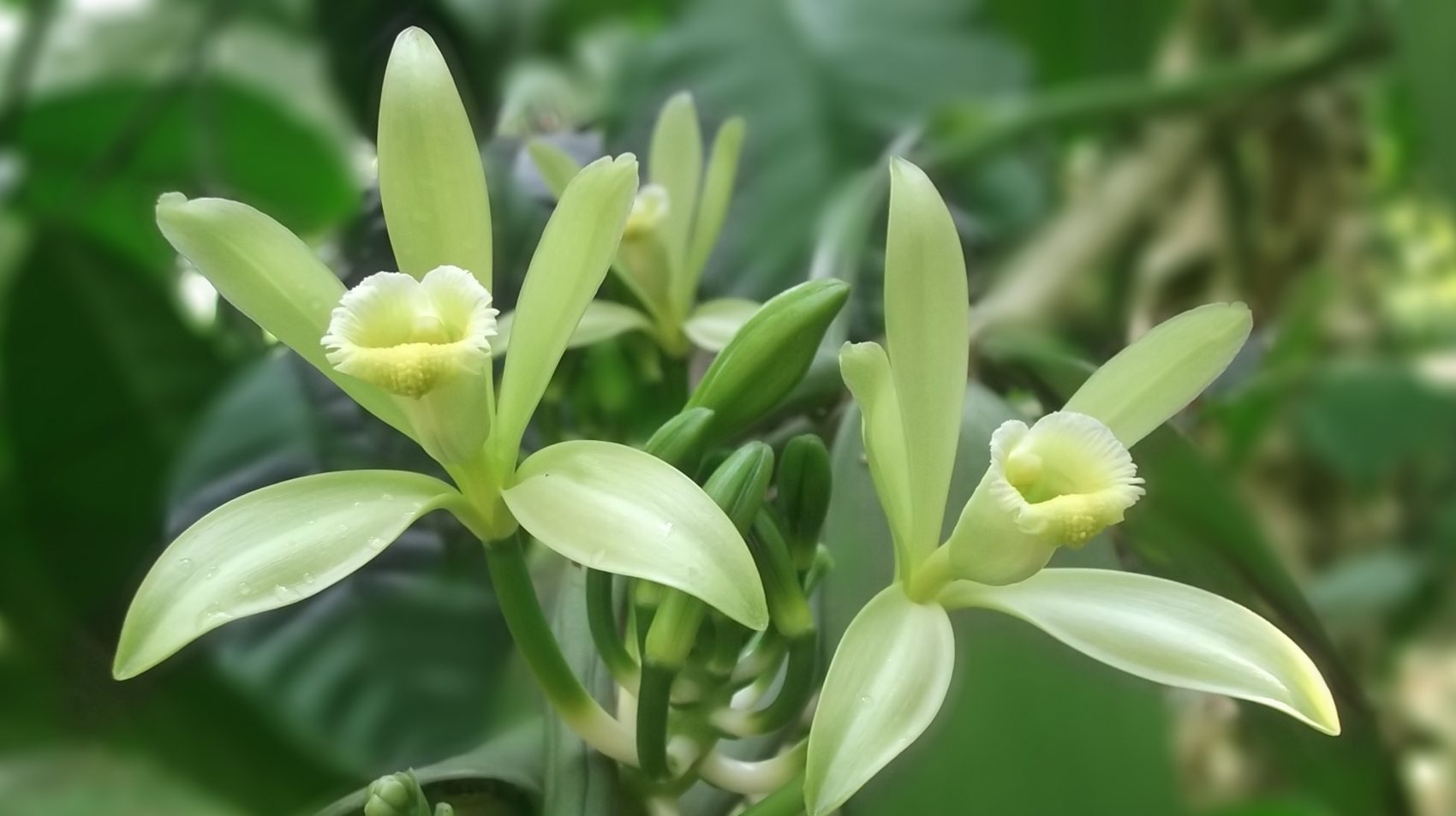
Orchids make wonderful house-mates. For those who suffer allergies or hay fever due to airborne pollen, there is no worry. Orchid pollen is stored in a waxy substance tucked away inside the plant.
Not only are they long-lasting (if correctly cared for), these plants are lovely, the flowers are colorful and unique, adding to the mood and décor of your home. Orchids have a reputation of being difficult to grow indoors, but if you get guidance on which species to select and provide the proper growing conditions, success is almost guaranteed. Once their basic needs are met, orchids require very little care.
There is a whole array of information on orchids’ nutritional value and their inclusion in many cultural dishes and medicinal regimes. One author said she ate an orchid flower and thought it “tasted like water.” The blossoms are said to resemble salad greens by others.
Vanilla, the very vanilla we flavor cakes, cookies and dessert with, comes from orchids. The Vanilla planifolia orchid (pictured above) is a vine-like plant which grows up to 30 feet long. It is the only orchid which is propagated for use in industrial food production.
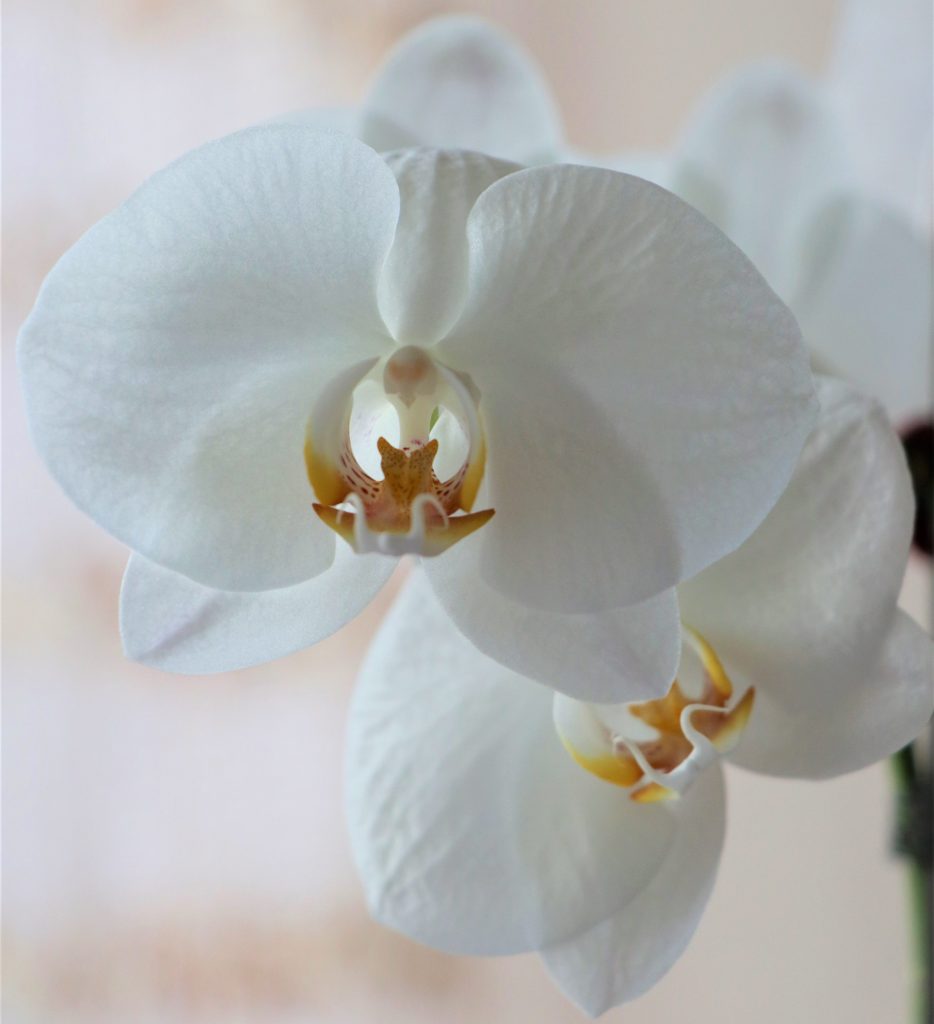
In our very brief visit to the world of orchids we hope we’ve awakened an inspirational interest. Before we end, one more story. In Chinese art, the “Four Gentlemen” (plum, orchid, bamboo and chrysanthemum) have been depicted in paintings for over a thousand years. Their refined beauty has been imbued with certain virtues and divided between the seasons.
The orchid is representative of spring. The orchid has beauty and grace which is fragile in form, showing no violent tendencies. Because the fragrance is not overpowering, the ancients saw it as representative of humility and nobility.
Hint for our artistic readers: The Buddhist monk Jue Yin said “When I am glad, I paint orchids. When I am angry, I paint a bamboo”.
